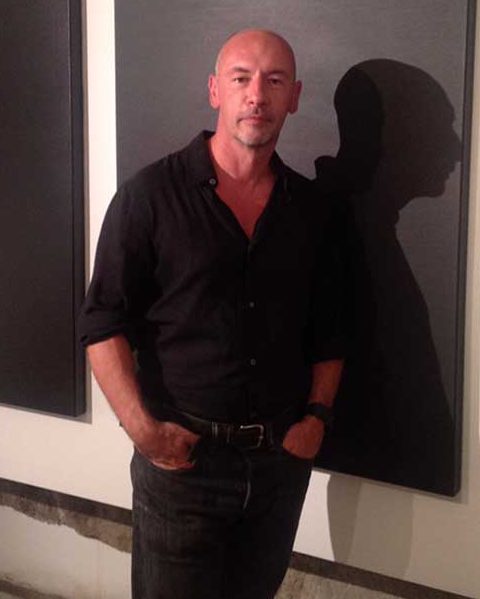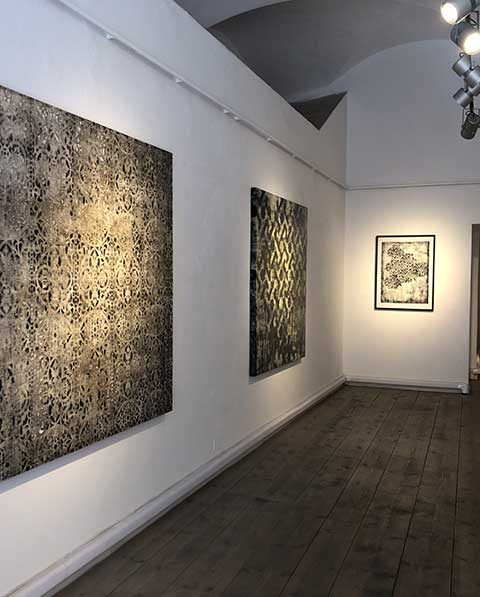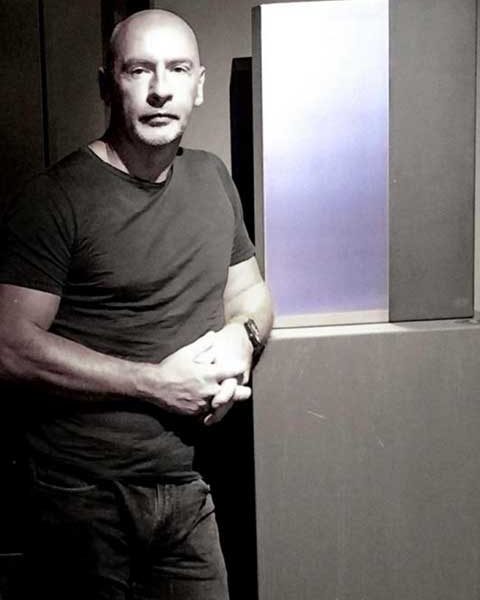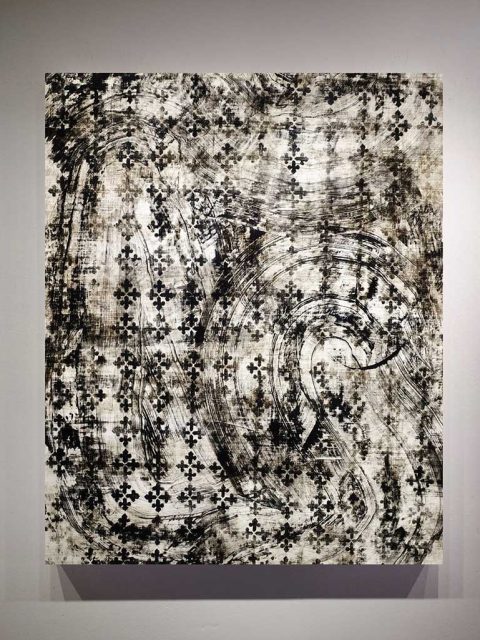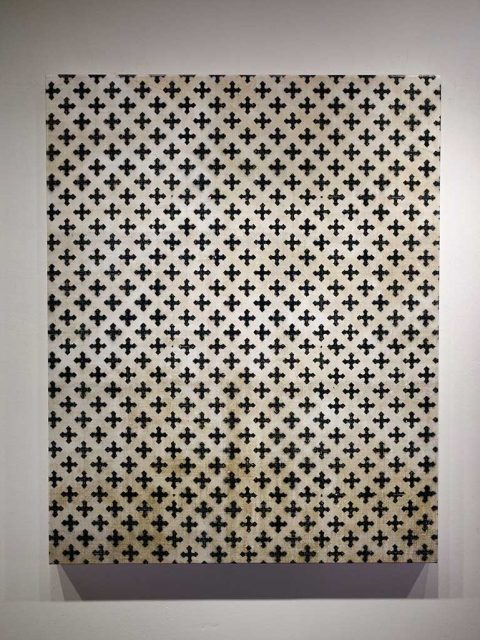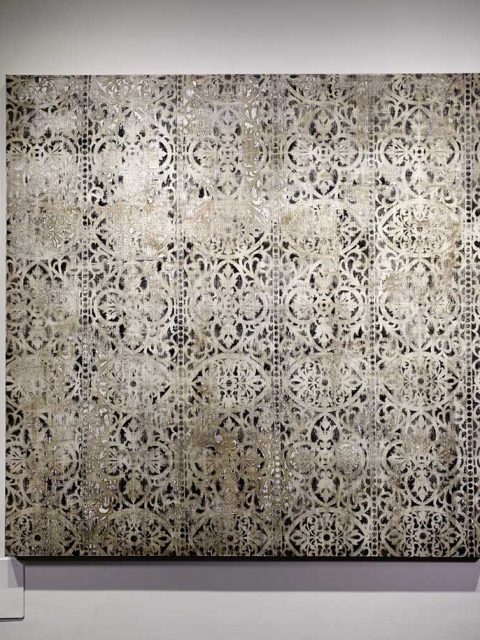Luca Brandi was born in Florence in 1961. From the age of ten he helped the master Romolo Prati, in Florence, in making great religious representations on panels for the sacristies of churches; he learns the frame on the panel and the layering of the painting in the preparation of the funds for the great works.
From 1983 he attended the abstract painter Paolo Galletti, from him he learned the theories on the decomposition of form through geometric painting and color.
In 1985 he held his first solo exhibition at the Dada gallery in the province of Florence and following various solo and group shows in Florence at the Ken’s Art Gallery.

From 1990 to 2000, he lived years of introspective research, visiting museums and contemporary art galleries in the United States, England, France, Germany, studying the great classical masters of Abstract and Minimalist Expressionism, up until 2000, the year in which he began to work on new works based on the stratification of metallic colors, which is still the basis of his work. In 2007 his first catalogue was published with an important collection of works from 2000, curated by Giuliano Serafini. His works are moving in territories that he still has not explored, which are unknown to him. Once Rothko admitted that “a painting must be something miraculous”, amounting to gesture of impartiality and indulgence. This is the same path taken by Brandi – that which leads to his spirituality. The material too – indissolubly mixed into the metallic pigment – starts to reacquire, almost through the effect of an alchemic dissociation, its own identity of pure color, a sumptuous and velvety coloring. What is certain is that urgency of perfectibility, the integral development of these paintings so very strongly accomplished in its rhythms and its golden section relating, has enabled Brandi to discover a further prodigious truth: that only by infinitely reproducing the same picture can one nourish that eternal Heraclitean flow which we call art.

He takes part in solo shows with the Immaginaria gallery in Florence, during the Art Fairs of Vigo (Spain), Istanbul and Karlsruhe (Germany). In December 2008 he was participating in a group show in Berlin. In May 2009 it was the turn of his solo show in Wiesbaden at the Galerie Nero, a work that is part of the museum collection of the host city. In November 2010 he continues with solo shows in Florence and Berlin and in the same year he donated some works to the Florentine Oncology Center. From 2011 to today his solo exhibitions have been set up at Palazzo Rosso in Genoa, at the Immaginaria gallery in Florence and at the ZetaEffe Gallery. In 2018 the exhibition Ne la Pittura hold the field – Three Canticles in Abstract at the Ancient Franciscan Cloisters of Ravenna in collaboration with the Accademia della Crusca. In 2019 the ZetaEffe Gallery in Florence dedicated a solo exhibition to the artist.His works are present in private and public collections, in Italy and abroad.
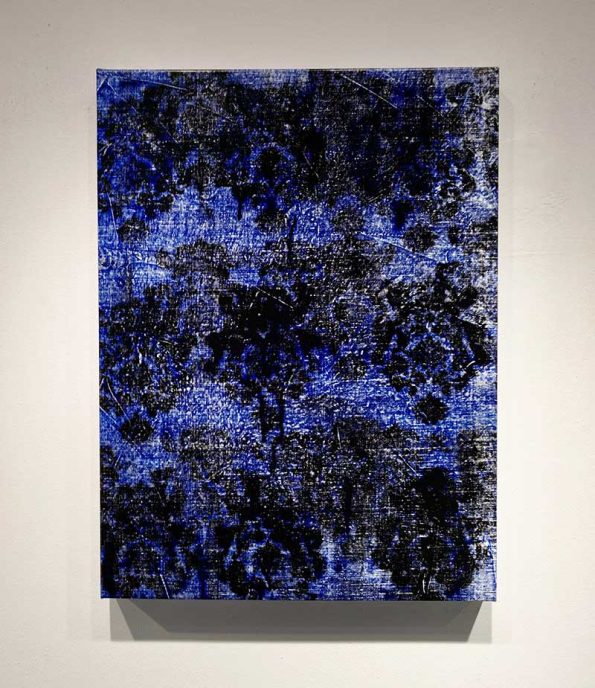
You have been born in one of the most important cultural cities, Florence. How has this situation influenced you?
I was born in the city of renaissance, and what influenced my work the most are Giotto and Cimabue’s icons. I love the way they represent the Christ, the long shape of the human body, all this vertical shapes tent to spirituality, that’s why most of my painting are vertical. Another big influence to my inspiration was the view of Michelangelo’s entrance at the Biblioteca Laurenziana. This architecture is full of details, and seems to walk in the stairs of paradise, the same side has influenced the works of Mark Rothko, during his visit here in Florence.
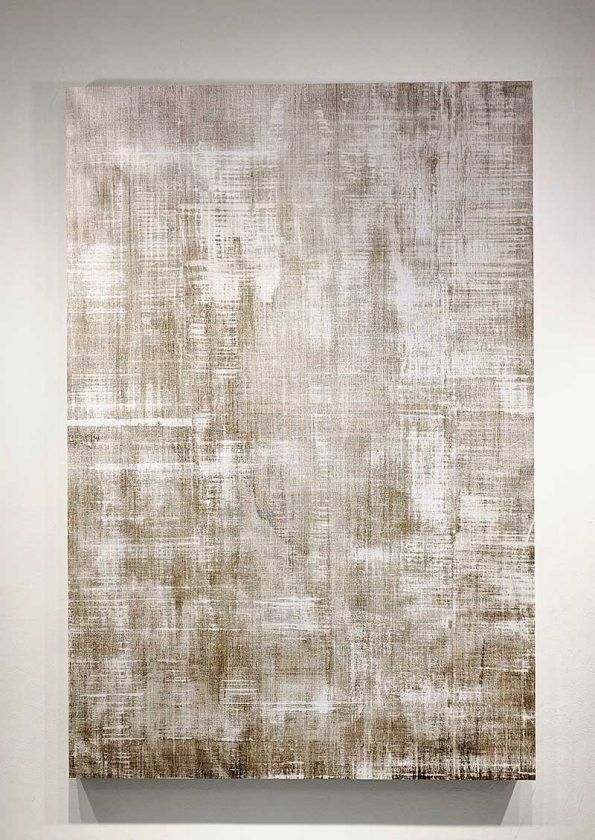
In your life are two important persons: Romolo Prati and Paolo Galleti. What they added to you as a professional, but also as a person?
Those 2 people both were simple people, with the attitude for art painting, they were artists with capitol A, but they maintain themself doing a normal job. It’s so difficult here to survive with your own art, because we are full the story of art, we cannot compete with Michelangelo, and Giotto, so the attention to contemporary art and artists are so low here.
I started with Romolo Prati, early at the age of 9, he had some commissions to make some modern style icons – panels representation of the saints, in a modern new church. I learned how to prepare big panels, for the paint process, and then the use of metallic colours for the background of the Saints images.
Paolo Galletti was an abstract artist, living in the country between Florence and Siena, he was know with some local galleries during years 70’/80’, and he made some beautiful geometric abstract artworks with Acrylic painting. I learned from him the mind behind the abstract style, and how to move with galleries and collectors. During this time I made my first exhibition in a gallery it was 1986, and I turn my style from figurative to colour field/geometric abstraction.
You have presented your artworks in different Art Galleries. Which experience did you get from them?
I had more than 30 solo exhibitions from 1986 to now. I held them in galleries and contemporary art museums in Italy and Europe, and the last one online with the Chinese Design Institute.
Having a good exhibition is a great experience, emotionally too, the contact with the gallerist, the collectors, and with the people you must explain your art to. It’s absolutely an important experience, when you see a gallery with all for your paintings, enables many more ideas for the future of your art grows in the mind, and there is a connection between architecture and the paintings.
Especially I love to have my exhibition in old buildings, one was held at the Lucca Contemporary Art Museum, and old building restored in the middle of Lucca city, where I presented a series of all black paintings, made on project for a specific room.
Another one was the exhibition for the Dante (the poet) festival in Ravenna in 2018. I opened the festival with my exhibition dedicated to the Divina Commedia, inside Chiostri Francescani, beside Dante’s tomb. it was emotional.
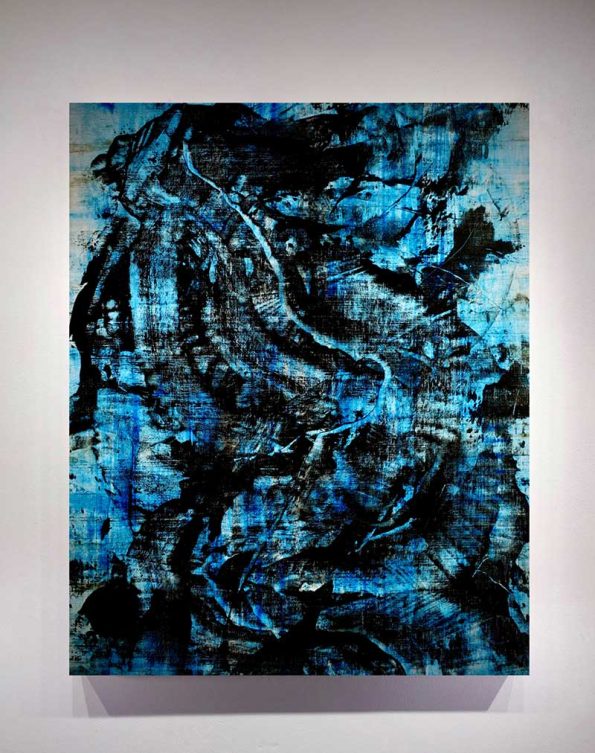
You are a sculptor and painter. Really different ways to work. I would like to know more about both and what do you want to express with them?
I mostly am a painter, and explore sculpture sometimes. I made some minimalistic ones in metal and almost sold all, so the result was good, and I have more ideas for the future. Sculptures instead of paintings, need more space, and that’s not simple to find in a medieval city.
The connection between paintings and sculpture is deep, and I think that a painter with a long experience should transform his ideas in 3D forms easily, but as I said need much more space to work at.
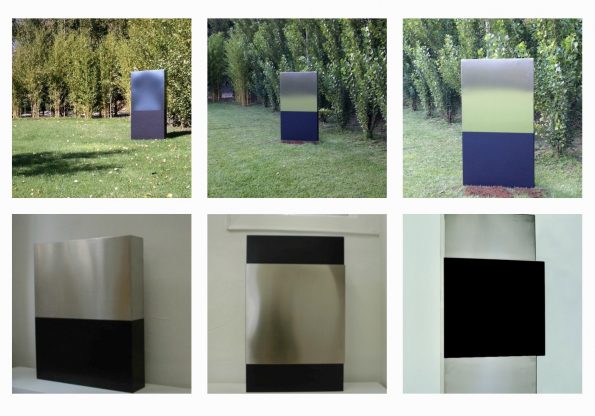
You have exhibited in different countries. Maybe to have close to you these cultures have influenced your work?
I visit many countries some for exhibition, some to visit museums and galleries, the relationships and the attention to contemporary art I found better abroad than here in my country. I’ve seen a deep approach to contemporary art and artists especially in New York and London too. Berlin has a day-by-day evolution in art and it’s inspirational for an emerging artist. I’m happy to know I had my artworks in collections all over the world, Australia, New Zealand, Asia, big hotels in USA, NY and in London. It’s inspiring to know that your artworks live their own life all over the world.
I visited Japan, their culture had influenced some of my works, and I sold some paintings in Tokyo and Osaka. I love the calligraphy masters and the use of the black ink that sometimes I replay in some of my artworks.
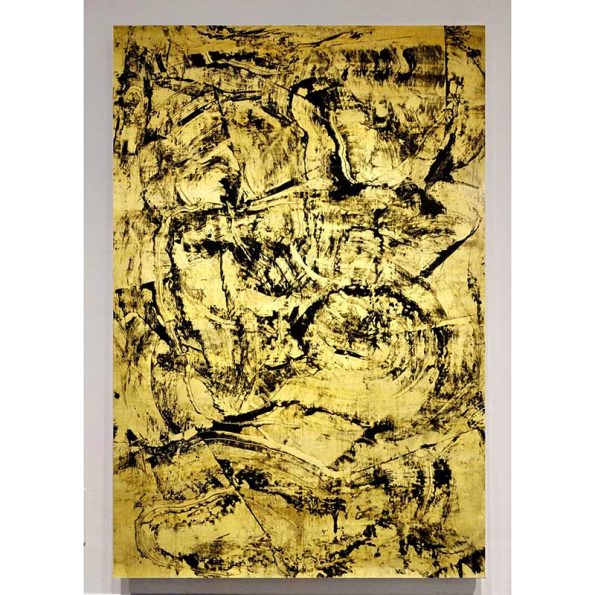
What is really the essence of Luca Brandi?
I travel through different abstract styles, from expressionism, geometric, stencil etc. I make a long preparation to the surface that is different for what I wanted to do. I use mostly supports as linen and handmade papers. I search these supports everywhere and I prefer as natural as possible with a personality itself to give to the painting some more than the usual supports.
I tried to freeze a feeling in the artwork, is it a moment or the feelings of an entire life. I wanted to mix the time, old and new to realize something that can talk to the soul of the spectator.
Paint again and again to the infinite.
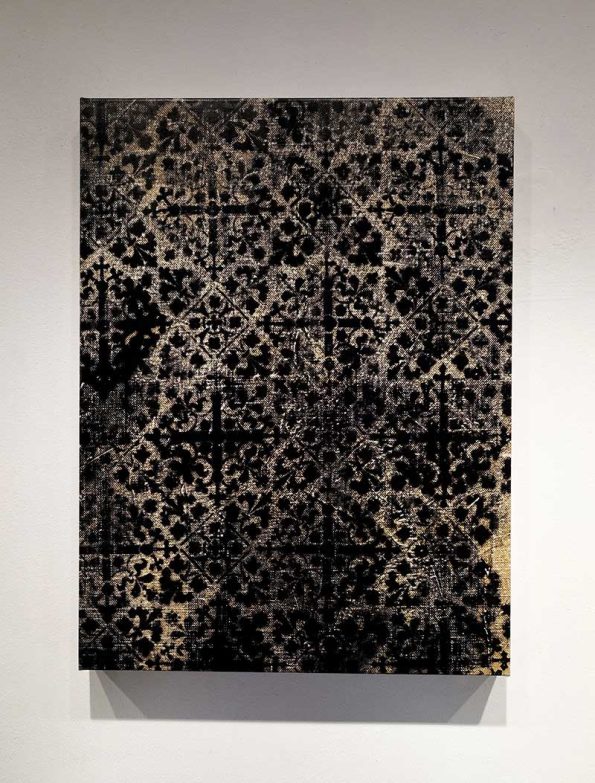
How do you feel that the Art will go in the next few years?
Art had an evolution especially during the COVID, with the digitalization for necessity, more of the young artists without a gallery or unknown, had the opportunity to be visible through the web. This process in the past years was more difficult and needed a long time.
I think we are coming out with the new era of art. It should be easy now that a young artist had his painting projected around the planet.
My last exhibition with the Chinese Institute of Design is entirely online with a virtual reality video that’s projected simultaneously on 500 sites straight to China. These opportunities were unthinkable 10 years ago for an emerging artist, and that is very important for the art business and the evolution and value of the artworks.

The artist born or is made?
I think I was born an artist, for me painting is necessary, I’m an intellectual in the way of expression through the painting, I think abstract, my inspiration comes from the spirit, and the every day life, paint for me is a way of thinking and talking.
During the years I refine my technique, that is important, but the most important is the expression, the painting should be perfect in technique and realization but without expression it’s a dead object.
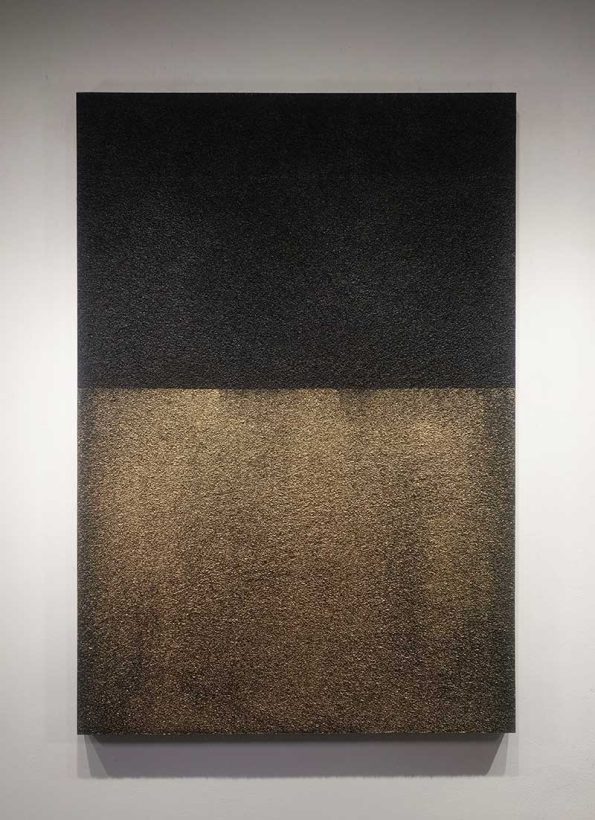
I suppose that you have some plans for the future. Can you share them?
I had some plans to make real exhibitions in the future through Europe and USA, now we are waiting for the end of COVID to come back to travel. In the meanwhile I’m working to extend visibility with social media and platforms, to sell my artworks from there.
